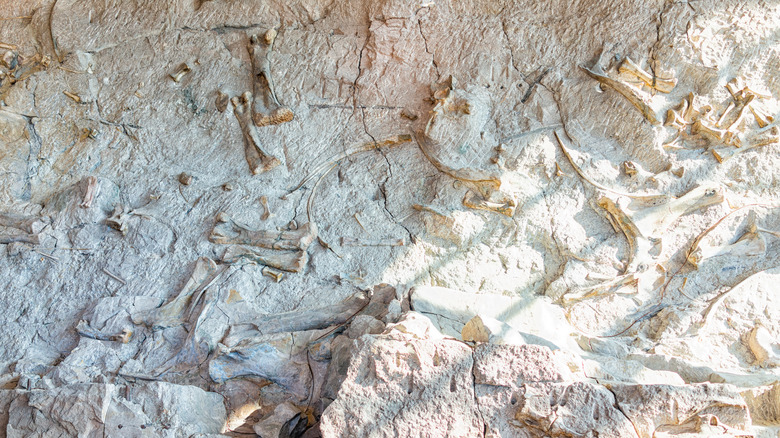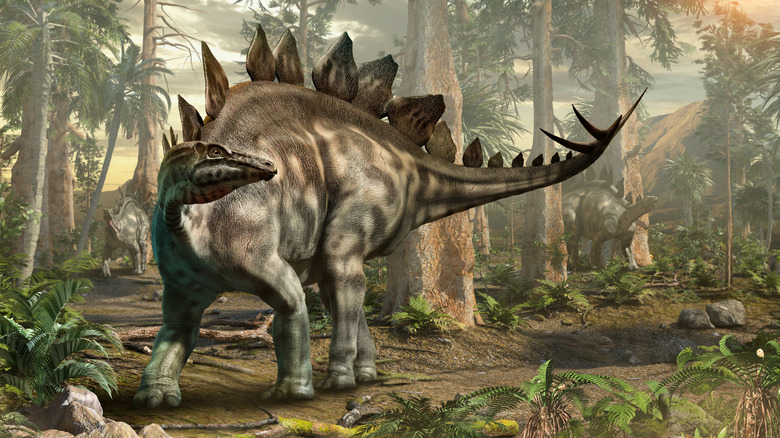A Recently Identified Jurassic Dinosaur Species Sheds Light On A 150 Million-Year-Old Mystery
Researchers have announced the discovery of a previously unknown dinosaur species, and it appears to fit a gap in evolutionary history that has baffled generations of scientists. Between 2021 and 2022, a series of fossils was uncovered on a stretch of private land in Colorado that all came from a small animal, just under six feet long. At first, the specimen was identified as a Nanosaurus, a genus of minute dinosaur that was named in 1877, but subsequently received very little attention, and was never well studied.
The discovery caught the attention of Professors Susannah Maidment and Paul Barrett at the Natural History Museum in London, who arranged to purchase the fossils for further study. They suspected there was more to this specimen than the old Nanosaurus label could cover, and they were right. It turns out that, not only were the fossils from a previously unrecognized species, but there was never really such a thing as Nanosaurus in the first place.
Comparing the fossils from Colorado to other "Nanosaurus" specimens in museums around the world, Maidment and Barrett realized that none of the finds were truly identical, and that they were really dealing with a large family of tiny dinosaur species that needed to be examined with a completely fresh perspective. In the June 2025 issue of Royal Society Open Science, they took the first steps towards this goal by announcing a new name for the specimen that had changed everything: Enigmacursor.
Solving a prehistoric enigma
The full name of the newly identified species is Enigmacursor mollyborthwickae. As with all scientific names for organisms, each part of the name holds special significance. The word "enigma" comes from ancient Greek by way of Latin, and means "riddle," a nod to the fact that small-bodied dinosaurs of this nature have presented a particularly puzzling case for paleontologists over the years. The word "cursor" is from the Latin for "runner," which alludes to the strong, bipedal legs of the species. The second half of the name is in honor of Molly Borthwick, the donor whose financial backing allowed the Natural History Museum to purchase the fossils.
The fossils uncovered in Colorado come from the Morrison Formation, a vast sedimentary rock formation that stretches across the western United States from Montana to New Mexico. The Morrison Formation is famous for containing fossils from the Late Jurassic, the second and most famous of the three time periods in which the dinosaurs dominated the Earth. While the Morrison Formation has led to the discoveries of some of the most famous large dinosaur species, its smaller specimens have long been overlooked, leading to the poorly-defined grouping of Nanosaurus. In the course of comparing these fossils to others that had been labeled Nanosaurus, the flimsiness of the science became apparent, and in the Apri, 2025 issue of the Bulletin of the Peabody Museum of Natural History, Maidment and Barrett argued for phasing out the name Nanosaurus altogether.
What was the life of Enigmacursor like?
Once the confusing label of Nanosaurus was cast aside, Maidment and Barrett were able to examine Enigmacursor as an independent species and create a basic profile of what this creature looked like and how it lived. As previously mentioned, Enigmacursor was small for a dinosaur, its skeleton measuring 180 centimeters in length and 64 centimeters in height (that's about six feet long and two feet tall). About half of the animal's length came from its tail alone.
The "cursor" part of Enigmacursor's name comes from the assumption that it was a very fast runner based on its legs. The species was bipedal, with long hind legs and massive feet. The shape of its femur bones is one of the species' most distinct features, with attachment points for muscles not seen on other, similar dinosaurs. Arriving at a better understanding of this animal's movements is one of the primary goals for researchers as they continue to distinguish it from the mass of previously-declared Nanosauruses.
Despite its formidable hind legs, Enigmacursor had very short forelimbs, reminiscent of the arms of a T. rex. However, Enigmacursor was about as unlike T. rex as a dinosaur could be, not only being a fraction of the size, but also being an herbivore. Instead of fearsome fangs, Enigmacursor had stubbly teeth, which it would have used to eat ferns and cycads, since grasses and flowering plants had not yet evolved.
What was Enigmacursor's relationship to other dinosaurs?
The fossils of Enigmacursor have been dated to the Late Jurassic period, roughly 145 to 150 million years ago. This is when the Morrison Formation was created, and the other fossil specimens found in it tell us what dinosaurs were roaming the lands alongside the newly-discovered species. These would have included one of the most famous dinosaur species in history, Stegosaurus, which could reach five times the length of Enigmacursor. It also would have lived alongside Diplodocus, which was one of the longest dinosaurs ever known to live, at around 85 feet in length. That's nearly 15 Enigmacursors.
Paleontologists are now investigating how Enigmacursor related to larger Jurassic herbivores in an evolutionary sense. Mighty Stegosauruses and Diplodocuses hauled their massive bodies around on four limbs, but the very first dinosaurs to ever exist were all bipedal. Researchers believe that those enormous quadrupeds actually evolved from something very similar to Enigmacursor, and the new discovery could bring us closer to understanding exactly how that process unfolded.



